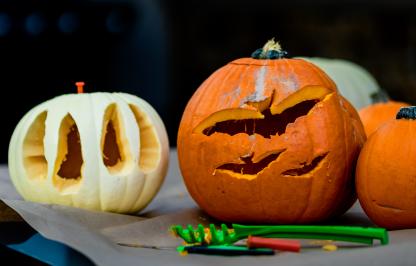The number of sage grouse at leks decreased in Spring 2021 according to new data analyzed by the Wyoming Game and Fish Department. The decline in lek attendance was expected for 2021 due to the sage grouse’s cyclical population trend and added drought conditions observed in Wyoming. Despite this decline, Wyoming remains a sage grouse stronghold across the west.
Lek attendance was down 13% from 2020. Officials counted an average of 16.9 male sage grouse per active lek, and over 15,800 peak male sage grouse were observed on 85% of known, occupied leks. Annual counts are carried out by Game and Fish, Bureau of Land Management, consultants and volunteers. Birds are counted either aerially or on-the-ground through observations from a distance during their spring mating.
Chick survival is vital to supporting sage grouse numbers. Populations are cyclic and also influenced heavily by available food, like insects and forbs. Following a dry year, those resources were limited, and sage grouse broods averaged just over one chick surviving for every hen. The 2020 hen-to-chick ratios were too low for population growth.
“When considering the sage grouse’s population cycle, we look at the number of chicks per hen,” said Leslie Schreiber, Games and Fish sage grouse/sagebrush biologist. “Game and Fish estimated an average of 1.1 chicks per hen in 2020. In order for the population to grow, the average needs to be closer to 1.5 chicks per hen.”
The Wyoming sage grouse populations hit an all-time low in the early 1990s following an extended drought and loss of habitat. Statewide lek counts remain above the most-recent low seen in 2013.
Habitat is key to the sustainability of sage grouse, and that is underscored in times of drought. Sage grouse are a sagebrush obligate species and could not survive without the plant.
“Sage grouse cannot thrive if the sagebrush habitat is fragmented and in poor condition which is why Wyoming engages in significant efforts to conserve sage grouse and build resiliency in the ecosystem,” Schreiber said. “Habitat projects that keep water on the landscape will be a priority in the coming years.”
Game and Fish data on sage grouse lek attendance goes back nearly six decades and charts the cyclical nature of the bird’s population.
“Sage grouse populations rise and fall,” Schreiber said. “Studies indicate Wyoming’s population cycles every six to eight years.”
The cause of these well-established cycles is not understood, but it is thought to be influenced by weather and climate, which in turn impacts the availability of food and cover in the sagebrush ecosystem.
Game and Fish manages the bird to accommodate for the natural rises and falls in their population cycle. Part of that management includes a conservative hunting season. Sage grouse populations appear to be in the midst of a downward trend in their population cycle, and hunters can expect to see fewer birds on their fall pursuit.
Lek counts decrease in 2021
Sara DiRienzo (sara.dirienzo@wyo.gov)



